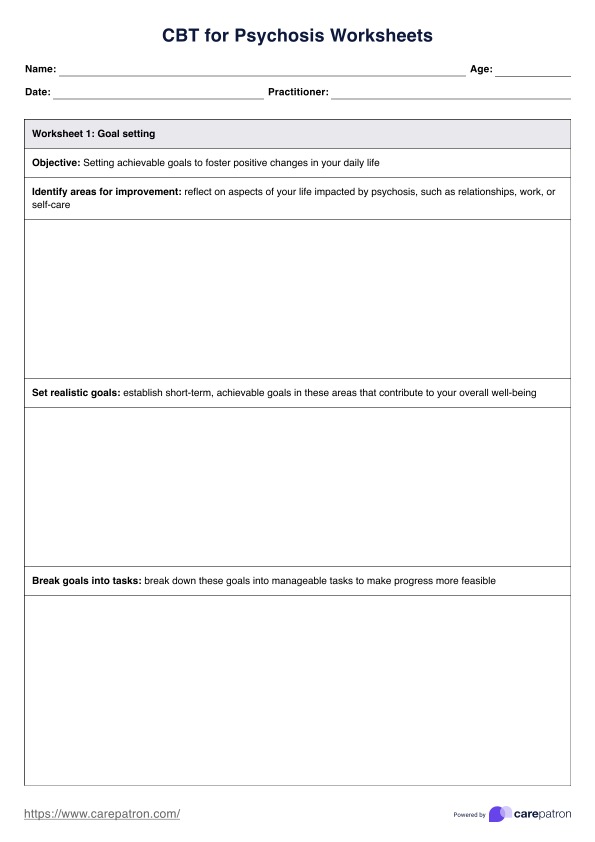Yes, it is, since it can be a symptom of schizophrenia.

Click here for PDFs of CBT for psychosis worksheets you can incorporate into your patient's treatment plan to help them manage their symptoms better.
Yes, it is, since it can be a symptom of schizophrenia.
The recommended number of sessions of CBT for psychosis is at least 16 over six months.
You can either print the worksheets and have your client answer them with a pen or send them a copy and have them answer it digitally on any PDF editing software.
EHR and practice management software
*No credit card required
Free
$0/usd
Unlimited clients
Telehealth
1GB of storage
Client portal text
Automated billing and online payments